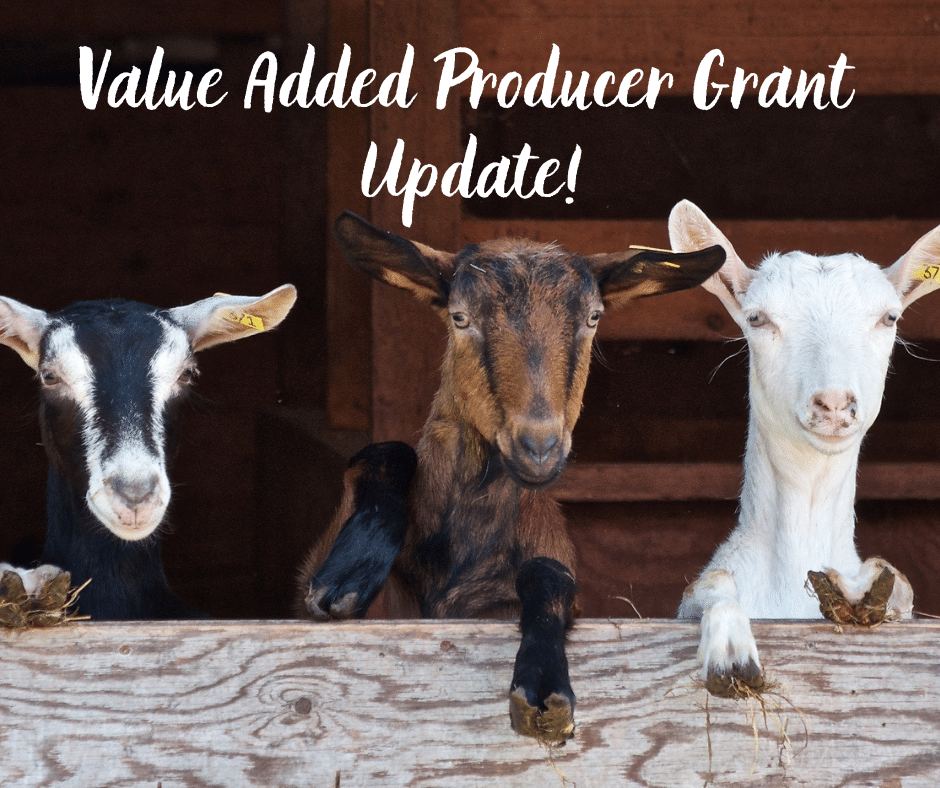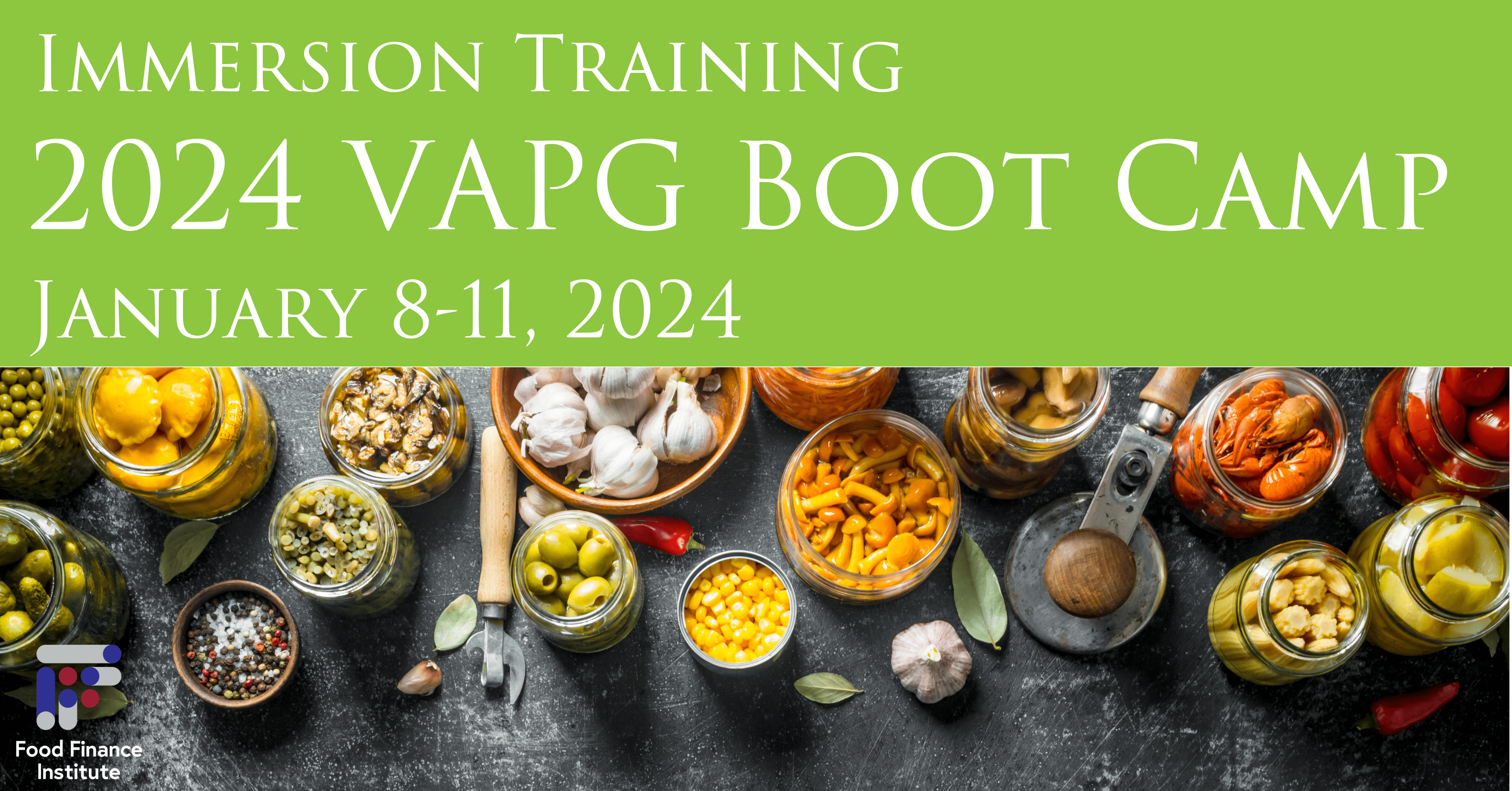The 2021 USDA Value Added producer Grant offers a unique opportunity for farmers to compete for planning and working grant funds – both in terms of the amount of funding available and the 10% match requirement for a significant portion of the awardees. Note: limited consulting is available for WI, MN, IA, and IL producers, read more here!
Unfortunately, as of this writing (March 9), there are only 50 days to grant submission. Although there are multiple ways to complete this task, JDG Consulting and the Food Finance Institute suggest the following steps as guidance for farmers and technical assistance providers seeking to submit an application:
Step 1. Research and Due Diligence
- Start with the USDA VAPG site – print out all resources – read carefully (and note questions) on the Toolbox template [Planning; Working Capital] so that you can ask USDA state desk officers
- See Raising Money for Your Farm Through Value-Added Producer Grants | Edible-Alpha® (edible-alpha.org) webinar, accompanying handouts, and JDG eligibility videos for a specific strategy, FAQs, etc.
- See additional web resources – National Sustainable Ag Coalition, AgMRC, and other webinars provided this year.
- Talk to a farmer that has done a VAPG – was it worth it? How did s/he complete the application and the award?
Step 2. Talk to your state USDA desk officer, ensure eligibility
- Be prepared to talk to the desk officer – email them with the general idea of the grant and be prepared to review with them all eligibility questions. Find your state office contact here.
- If there are issues with your eligibility, ask for them to problem-solve with you.
- Please note that not all candidates will fit under the USDA eligibility rules and that you MUST be deemed eligible to have your proposal scored for a possible award.
Step 3. Start all administrative and eligibility tasks
- FOLLOW THE TOOLBOX Templates you downloaded in Step 1…. Check the template and if there are issues, check with the USDA desk officer
- Do you have:
- EIN, DUNS, and SAM numbers?
- All licenses, tax issues, etc – is your venture eligible? Check and double-check.
- Do you need a Business Plan? A Feasibility Study?
- Do you understand the type of grant that you are applying for? Do you understand the value added methodology that best fits your project?
- Do you understand the match requirements? Can you fulfill them?
- Make sure that you understand and characterize the priority points appropriate to your situation.
Step 4. Formulate your research and writing plan for all sections
- Some sections are not scored, but provide eligibility verification and are subsequently cited in the scoring sections. Sections 5.2 and 5.3 are examples of these – they provide a logical analysis of your situation, research, and solid numbers that are built upon further within the proposal.
- Workplan and Budget – see FFI VAPG webinar for a possible strategy here. Stating the obvious – but keep in mind the more complex your proposal, and the higher your request, the more logical your work plan and budget should be.
- Qualifications – follow the directions and include the complete picture of your principal management team, your advisors, and your support staff. Link the qualifications to both the work plan and budget (for staff support and family in-kind match during the grant period) and to the letters of support and commitment.
- Letters of Support and Commitment – Divided into three categories – producers, end-users, and third-party support. Have the letters tell a convincing story about your venture. If possible, end-users (buyers of your products) need to be as specific as possible. Template letters are of limited value, do the work to outline individual letters for each LOS/C. Make sure those writing you letters get them to you at least one week before the deadline.
- Nature of the Proposed Venture – read the suggested sub-topics for each of the four main topics and address them all. Note the FFI webinar discussion of strategy for writing these four sections. A 3–5-page essay for each section is not unheard of.
Step 5. Complete Eligibility Sections, and re-check gray areas with USDA desk officer
- If possible, re-contact your USDA desk officer or contact a veteran VAPG writer to review your eligibility requirements. Some universities or non-profits provide an eligibility check also.
- Make sure that any decision by USDA covering a gray area of eligibility is provided in writing.
Step 6. Complete Scored sections – Review
- Draft each section, but be ready to review all written sections together. There are a number of sections that address similar topics areas – try not to repeat the same points in the proposal and/or reference a previous section (especially reference section 5.3 Expansion of the Market into section 6.2 Nature of the Proposed Venture)
- Review the proposal once for content, and then a final time for grammar.
Step 7. Complete proposal (below for hardcopy submission)
- Print out all of the parts of the proposal – have plenty of ink and paper on hand.
- Review the order requested by the USDA template and place in that order. Incomplete proposals will be ineligible.
- Overnight the package to the USDA state office 1-2 days prior to the deadline.
Endnotes:
- You may want a team to complete this application. Expect your team to spend a minimum of 100 hrs to complete any VAPG.
- Note that using past VAPG applications as a template can result in errors and omissions. Use the 2021 template.
- FFI/JDG will be available after April 5 and can provide one hour, for up to 15 candidates, to discuss the research/writing plan for the VAPG. To qualify for this free consultation your business must be based in MN, IA, IL, and WI and have completed steps 1-4 above. If you are interested in being considered for one of these calls complete this form and select the “VAPG Information” checkbox.
Consultation support and VAPG programming are funded by the Small Business Administration, through our Farm Portability grant award.

